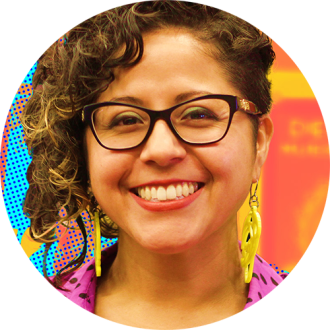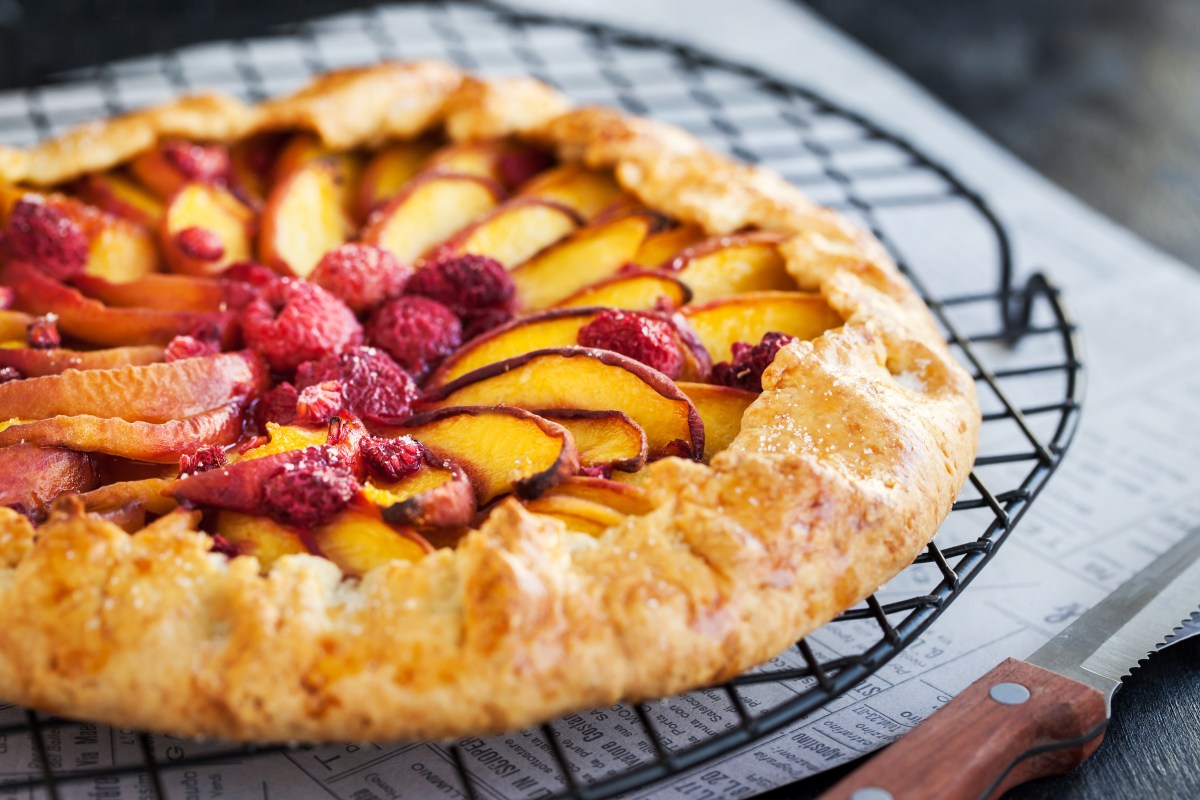Hey there,
“In order to rise from its own ashes,” science fiction writer Octavia Butler once wrote, “the phoenix first must burn.” We are doing just that — here on the West Coast, at least, where massive wildfires are destroying lives and livelihoods, and even those of us out of direct harm’s way are waking up to smoke and ash outside our front doors. It’s starting to feel a bit over the top, this year called 2020. Like living in the dystopian novel of a clumsy writer who couldn’t decide on a single plot device, so tossed in a few for good measure.
It may be hokey and premature to talk about rising from our own ashes. But I find myself grasping for hope in any form, and lately I’m finding that hope in creative and colorful visions of the future that assume we will make it out of this mess, into a transformed (if still imperfect) world. From chronicling the history of a climate haven that doesn’t yet exist to forecasting the final, ambivalent reckoning faced by climate criminals to imagining dramatic changes in the next eight years, writers, artists, and other visionaries are pointing us to a future we can feel OK about. Maybe better than OK.
When those phoenix (phoenixes? phoenici?) rise from the ashes, they are said by some to be more beautiful than before. It could be the smoke going to my head, but when it comes to creating a just, sustainable world, out-beautifuling ourselves sounds like a worthy goal.
Let me know what motivates you these days, and let your friends know about this newsletter.
With a shred of hope,
–Chip, Grist and Fix founder
Your new hero

“Art helps us imagine the world in a different way. In doing so, art can help us imagine solutions to move forward.” So says Favianna Rodriguez, an Oakland-based artist, activist, and organizer who was featured on the 2018 Grist 50. We caught up this week with Rodriguez about her art practice during this challenging time, and how she sees art and culture spurring change for a better future.
Q. What’s the role of art in helping people to imagine a better world?
A. The world of art is often the world of fiction — it’s the world of big ideas, of possibility. Art helps us make the impossible feel possible. It can also show us — whether it’s through film, images, songs — what the world that we want can look like and feel like. It speaks to our emotions. And for that reason, I think that art is indispensable in our social-justice work.
Q. How does art contribute to real-world change?
A. It starts by helping to normalize ideas. For example, before there was a win at the Supreme Court level for marriage equality, first that idea needed to be normalized within our imagination. The stories of LGBTQ people were present throughout television, literature, theater — the first time somebody came out on national TV was Ellen in 1997. And it wasn’t until 2015 that marriage equality passed on a national scale. Timelines are shorter now, because culture moves so much faster, but culture is where public will for an idea is built. It’s very hard to get a political win without the idea having first sewed a fertile ground.
Q. How do you personally find hope and inspiration — even in the midst of such a challenging present?
A. I look at other inspiring artists, like Ashley Lukashevsky and Micah Bazant, for beautiful art about the future. And then my organization, the Center for Cultural Power, is always doing climate stories. There was one in particular we did with Native folks who are using solar power — we called it A Power to Rely On. The way we show possible solutions is by profiling those who are making the change now.
I think the world right now is very hard. I really lean on my art to create another world. For me it’s my art, my garden, and my contemplative practice that allows me to imagine myself beyond the conditions of now.
Read our earlier interview with Rodriguez to learn more about her work.
Your reading list
Normally I recommend one book each newsletter, but this time I thought I’d share a few of the sundry reading options — a fist full of phoenix feathers? — that envision a new world rising:
- Habitat Threshold, by Craig Sanchez Perez: A Native Pacific Islander, poet Perez ventures beyond despair to imagine a society that ditches ecological destruction in favor of care and collaboration.
- The World We Made: Alex McKay’s Story from 2050, by Jonathon Porritt. From the year 2050, a fictional history professor reflects on the decades of technological breakthroughs and social revolutions that helped us avert climate disaster and transform the world for the better.
- Wilders, by Brenda Cooper. A story of two sisters struggling through the loss of their parents is set across a post-apocalyptic backdrop, featuring a solar-powered megacity, robot companions, and a band of “rewilders” tending to devastated natural lands.
- New York 2140, by Kim Stanley Robinson. More than a century from now, New York City is almost entirely underwater. Rather than diving headfirst into dystopia, though, this novel presents a Venice 2.0 that is equal parts vicious and beautiful — just like modern-day New York.
- Octavia’s Brood: Science Fiction Stories from Social Justice Movements. With stories by artists and activists, this justice-driven anthology dreams up a reality without war, prisons, and capitalism. Safe to say that utopia doesn’t include climate collapse, either.
- Glass and Gardens: Solarpunk Summers. From a wheat farm in Kansas to a crocodile ranch in Malaysia, these 17 stories transport us to a peaceful future powered by the sun, but full of the trials and tribulations that make us human.
- Dreams of a Low Carbon Future. This collaborative graphic novel gathers insights from scientists, artists, writers, and school children to assemble an illustrated vision of a sustainable future.
Hungry for more? Check out this list of optimistic cli-fi by my former colleague Zoe Saylor.
Your pick-me-up
These Dutch “bicycle buses” are transporting 50+ kids getting the kind of exercise that leads to better learning, who DON’T need to be driven & dropped off by parents adding lots of local car traffic. Nijmegen, NL video via @MartijnLi HT @urbanthoughts11 pic.twitter.com/cwxxLCYnlN
— Brent Toderian (@BrentToderian) September 7, 2020
- Two words: bicycle buses. These human-powered, group-transit gadgets have been getting Dutch students to school since 2012, offering a two-in-one solution for carbon emissions and childhood health alike. Now that a video showing the bikes in action is getting some love on Twitter, can we please make them a thing in the U.S.?
- Dense city. It sounds zzzz, but Portland has passed a history-making zoning reform, taking a step toward “legalizing inexpensive housing” and tackling the intertwined issues of affordability, transit emissions, and more. The new rules will increase density by allowing the construction of up to four homes on most residential lots.
- Business not as usual. Google just set a goal of running on carbon-free energy by 2030 and said that, as of this week, it had eliminated its entire carbon legacy back to 1998 through meaningful carbon offsets. Meanwhile, Unilever pledged to scrub the petrochemicals from its cleaning and laundry products (gross, right?) by 2030. On the one hand, too little too late; on the other, credit where some is due.
- This is what democracy should look like. If for some wacky reason you think we shouldn’t count on corporate benevolence to save the day and even maybe think governments should sorta kinda set policies on behalf of the people, you’ll want to check out this nifty Vox guide: “11 ways to fix America’s fundamentally broken democracy.”
- Paint it black. Death-by-wind-turbine is a very rare fate for birds, but reducing wildlife collisions is still important as the world ramps up its renewable energy supply. The Norwegian Institute for Nature Research has made an encouraging discovery in that area: painting one blade per turbine black could cut bird fatalities by 72 percent.
- Saved by the 90s? Swatch (yup, still exists!) is releasing a throwback line of watches with cases made from “bio-sourced” plastic, and computer scientists are working to revive the Game Boy, but with a twist: The retro handheld console will run on solar power, in the hopes of sparking a green gaming revolution.
Your next move
To get to a brighter future, we need to take care of our fellow humans today. Here’s where I’m donating to support those affected by the wildfires. You can go a level deeper if you’d like to support particular individuals or groups in California, Oregon, or Washington.
Your weekend plans

Ekaterina Smirnova / Getty Images
In spite of the smoke-filled air, pandemic, and remote learning, my kids continued a back-to-school tradition and cooked up one of our family’s favorite desserts: an out-of-this-world galette. For the uninitiated, a galette is basically a formless pie that requires only a bit of imagination to make. My kids used overripe local peaches as the filling, scoring bonus points from this earnest eco-parent for giving new life to what otherwise might have been composted.
My family has adapted this recipe from The New York Times (best with stone fruits; apples make the thing too dry and berries make it too wet, though we did huck a few fresh-picked blackberries into this week’s edition.) Use lemon zest wherever suggested. And keep a close eye on things in the oven; unlike a phoenix, you don’t want this one to burn.


